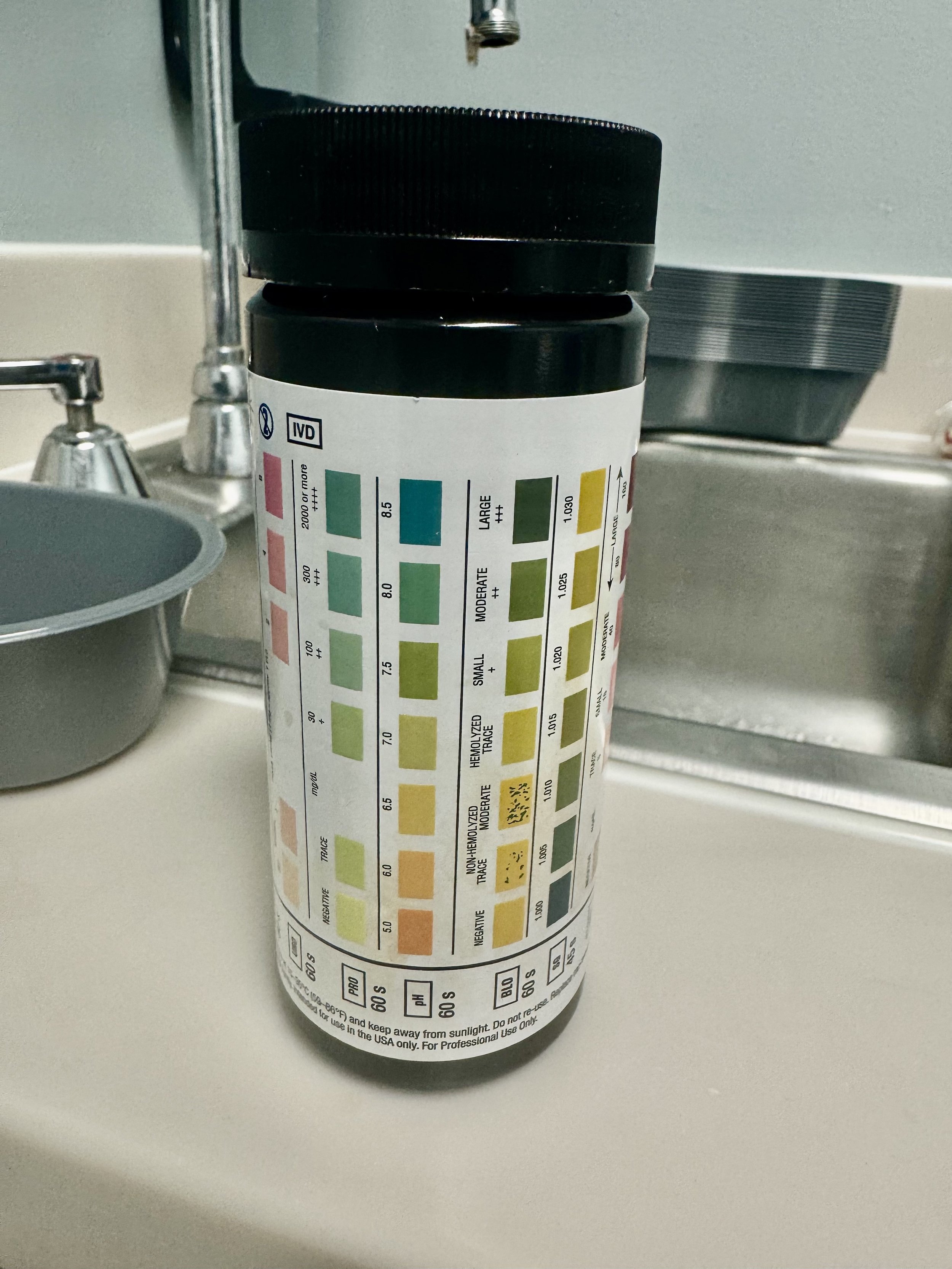Hi everyone,
For my very last POTD, I wanted to talk about a topic requested by our very own Chair, Dr. Eitan Dickman. The question is: what HIV testing is performed in the ED, and how do we do it?
Types of HIV Antibody Testing
1) EIA (Enzyme ImmunoAssay): This is a very common form of HIV antibody testing, and is indeed the testing we do from the MMC ED. ELISA (Enzyme-Linked ImmunoSorbent Assay) testing might be a familiar name to some folks and is a type of EIA. These EIA tests are performed by taking a sample from the patient and combining it with synthetic or native HIV proteins. If there are any HIV antibodies within the patient sample, they will bind with the HIV proteins. Usually a second antibody - an enzyme-linked antibody, hence the name - is then introduced that binds to the HIV antibody to aid in detection. Thus, if the notorious HIV protein/patient HIV antibody/enzyme-linked antibody triplet is detected, then the antibody test is positive.
However, it is vitally important to keep in mind that this initial EIA antibody test is only a screening test; a positive antibody screening test will automatically reflex to perform a confirmatory test. There are many types of confirmatory tests out there, but the lab advised me that we utilize RNA PCR testing. Which means, at MMC, you need to have a positive HIV antibody screening test + a positive HIV RNA PCR confirmatory test to be diagnosed with HIV. This is important to keep in mind when giving call backs to patients or following up on test results.
2) Rapid HIV Test: This test can be very useful for point-of-care settings, as the results are available in 20-30 minutes. We do not at the moment have this option, but some other care settings do.
3) Western Blot Test: This was an option for confirmatory testing but has been largely replaced by newer technologies, like our PCR testing.
4) 4th Generation Test: This test is special in that it tests for both HIV antibodies and antigens. By testing for the antigen, called p24, HIV infection can be detected far earlier in the disease course than antibody testing, as antibodies can take up to 12 weeks to develop. This is critical in limiting HIV transmission, as the virus is far more likely to be spread early in the disease course while patients are asymptomatic and/or unaware they are HIV carriers. Our ED testing is not currently an antigen test, but it is good to keep in mind for future practice.
Accuracy in HIV Antibody Testing
The sensitivity and specificity of HIV antibody testing help determine the accuracy of diagnosing HIV in our ED. HIV antibody tests typically have a sensitivity of >99%, meaning very few individuals infected with HIV will be missed by our screening test. However, it is important to keep in mind that the "window period" of time between exposure to HIV and to when the antibody test can detect the infection; given that antibodies, again, can take up to 12 weeks to develop, if a new HIV carrier is tested during this time, there is the possibility of a false negative.
HIV antibody tests also typically have a specificity of >99%, meaning there are very few rates of false positives. Despite this, it is paramount that we also get the confirmatory RNA PCR test in addition to the screening antibody test in order to ensure diagnostic accuracy and limit any anxiety for patients.
Ordering HIV Testing in the ED
Testing for HIV in the ED is incredibly easy. When placing an order, navigate to the "ED Sexual Assault / STI / PID Order Set", click the "HIV-1/2 EIA, SCR W/ RFL", and voila! A specimen of blood, oral fluid, or urine is collected and sent to the lab. If the screening antibody test is positive, again, the confirmatory PCR will automatically be reflexed and sent. Any HIV result is automatically tracked by the ED tele doc, so no need to include it in ED Call Backs. So, really, just ordering it here will do most of the work.








